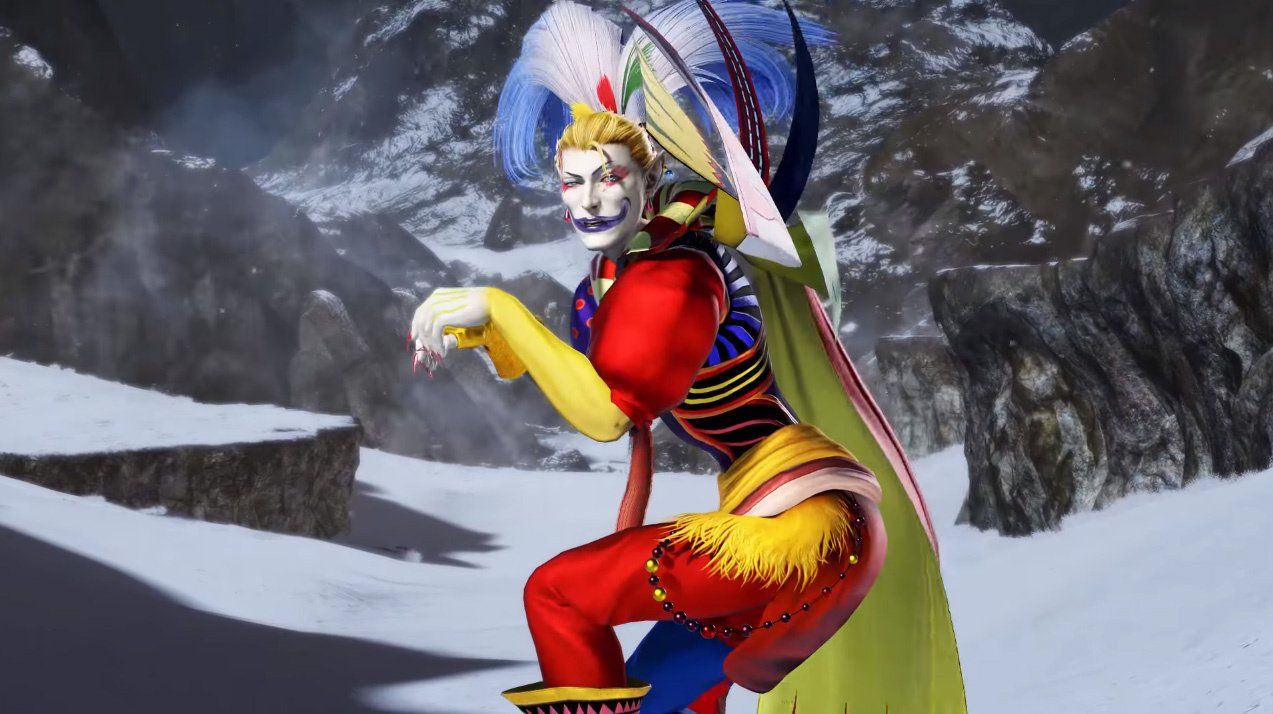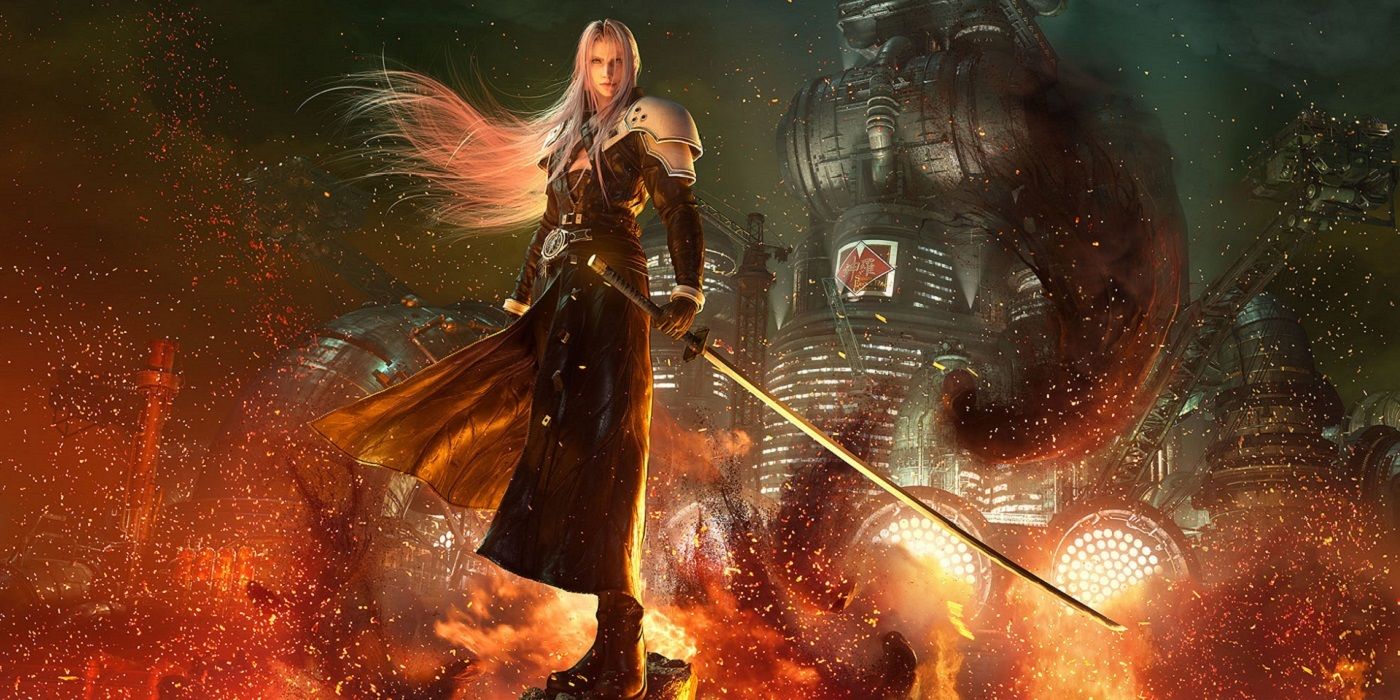From the strong core party of Final Fantasy 15 to the various traveling minor characters who develop throughout Final Fantasy 10, the various casts have propelled players through many fantastical adventures. Of course, the villains are nothing to sneeze at either, and often set the tone and pace of a game when they finally reveal themselves. Square Enix has written many good ones, but the two fans always seem to come back to are Final Fantasy 6's Kefka Palazzo and Final Fantasy 7's Sephiroth.
Any argument about whether FF6 or FF7 is better is bound to include a segment comparing Kefka to Sephiroth. Both sides call the other overrated or generic, and the discourse moves on. However, there's a lot to dig into when these two iconic villains are stood side-by-side. Many contrasts present themselves, as well as some similarities that can provide more insight into the shared creative process that goes into designing Final Fantasy. Obviously, Sephiroth has appeared in many more games and other media than Kefka has, so this analysis will primarily focus on the original Final Fantasy 6 and 7 releases.
RELATED: FF7 vs. FF6: 5 Reasons Sephiroth Would Beat Kefka (& 5 Why Kefka Would Win)
Kefka and Sephiroth's Similarities

First and foremost, the biggest similarity between Kefka and Sephiroth is their cultural significance. These two are more recognizable than any other Final Fantasy villain, and most other JRPG villains as well. While their roles in the story are straightforward, they both shine with plenty of memorable quotes and moments, not to mention character designs that personify everything that goes into a human JRPG antagonist. Sephiroth was not the first white-haired sword-wielding villain in Japanese media, but he is one of the most famous, and ripples of his design and personality have appeared in games ever since. Kefka may not have inspired many clowns to take on the role of archvillain, but he exemplifies how a deliberately campy villain acts, and his witty dialogue also sets a strong example for more comedic bad guys.
The dark duo also has surprisingly similar stories behind them, being the products of their home games' villainous organizations attempting to create superweapons. Kefka became who he is via the Gestahlian Empire's experiments with Magicite, while Sephiroth was an experiment from birth to see just how far Jenova cells could be pushed. Shinra and the Empire both served very similar roles in their home games as well, being the main villains up to a point before Kefka and Sephiroth fully take over. And take over they do, both of them ascending to godlike forms to ravage the world and fight the heroes. Kefka used his Light of Judgment to reduce the World of Balance to the World of Ruin, while Sephiroth summon Meteor to destroy Gaia.
RELATED: How Kefka Shaped Final Fantasy 7's Sephiroth and FF15's Ardyn
Even in Final Fantasy boss fights, the two are quite similar. Both are seen in gameplay early on in their respective games, although Kefka is a boss and Sephiroth is a guest party member who trivializes a boss-like enemy. When it comes down to their final battles, both are multi-part affairs as the villains transform and assume different strategies while fighting. When their final forms are reached (discounting Sephiroth's cinematic duel with Cloud), Sephiroth and Kefka both take on massive angelic forms and use signature attacks that can deal major damage and inflict status effects. They also both share the attack Heartless Angel, which can set the party's HP to one. And of course, the music that plays during each of their final fights, "Dancing Mad" and "One-Winged Angel," are iconic and have been associated with these villains ever since fans first heard them.
The Differences Between Kefka and Sephiroth

It doesn't take long for one to notice the many differences between these two characters, however. The first and most obvious thing that anyone looking at the two will see is that Kefka is a clown, and Sephiroth is a vaguely gothic bishounen. They carry themselves in completely different ways, with Kefka making plenty of jokes befitting of his appearance, and Sephiroth being calm and collected for almost the entirety of his screen time. Aside from Sephiroth's genesis as a villain in Nibelheim, he is confident and cool at all times, even leading up to his death. It makes his alarmingly violent actions just off-screen in the early game even more pronounced. Kefka, on the other hand, has no handle on his emotions, and always says whatever odd thoughts or impulses are on his mind.
That also plays into their different roles in the running story. Sephiroth is a hidden villain for a number of hours in Final Fantasy 7. His presence is felt, but he is not seen until the Nibelheim flashback. After that, the party is left to slowly follow him by his trail of casual destruction across Gaia, until they reach the Temple of the Ancients. He appears a few times and says some words to the heroes, but sometimes they don't make any sense, and other times they are just meant to manipulate Cloud.
The Final Fantasy 6 party does not personally spend much time with Kefka, but a number of them have been deeply affected by his actions, and they know he's trouble. Kefka takes an active role in leading the Empire's forces and driving its war campaign across the World of Balance. Players will see him constantly, always causing some sort of trouble. While he does retreat to the top of his tower after his ascent to godhood, Kefka's casts a shadow pver FF6 at all times due to the ever-present threat of the destructive Light of Judgment.
Finally, the particulars of who Sephiroth and Kefka are and what they become are distinct. Sephiroth is born and bred to be Shinra's finest first-class Soldier. He is raised in isolation and is left mostly to his own thoughts. While his Jenova cells play a part in his descent into madness, it could be argued that it's what Sephiroth's father Hojo had always planned for him. FF7 characters know Sephiroth as a celebrity until they meet him and find out who he really is. Kefka, meanwhile, is a nobody until he gets his Magicite infusion and becomes a military leader. He remains somewhat subservient for a while, but as soon as the opportunity for even more power presents itself, he backstabs his former allies to ensure that he alone gets it. Kefka and Sephiroth have their own stories and methods, but part of their charm is how they each set their own mood. These two villains are icons in the gaming world, and their legacies will last for a long time.
MORE: Final Fantasy: The 10 Strongest Villains In The Series, According To Lore

